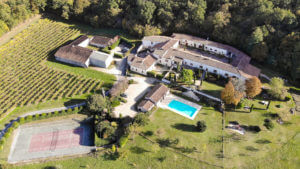
Getaway to Relais de Saint Preuil
Spend your next getaway or vacation in the Cognac vineyard, away from the frenzy of cities and crowded beaches
The production of cognac goes through several stages: the harvest of the grapes, the vinification of the white wines obtained after a few weeks, the distillation from mid-November to the end of March at the latest, the ageing of 5 to 20 years or even much more thanks to the quality of the production of the traditional cooperages, for, finally, the greatest pleasure of the gastronomes.
The vineyard of the delimited region of cognac, all combined, has around 6,200 farms which produce white wine from the Charentes for cognac. It is mostly planted with Ugni Blanc (marginally with Folle Blanche and Colombard). This late-ripening variety offers good resistance to “gray rot” and produces a wine with two essential elements: a high acidity rate and, in general, a low alcoholic content. Since the phylloxera crisis at the end of the 19th century, all the grape varieties used have been grafted onto different rootstocks chosen according to the types of soil.
The vine is planted with an average spacing of 3 meters. All types of pruning are allowed. The most used is the “Guyot double”.
This continues with the traditional harvest, the pressing of the grapes and the vinification according to natural methods.
Harvests can begin as soon as the grapes have reached maturity, generally at the beginning of October (around September 15 for several years) and end at the end of that same month. A few winegrowers continue to harvest by hand, but the vast majority use a harvesting machine. These machines, which have been in existence for over thirty years, are now perfectly suited to the requirements of winegrowers in the Region.
The pressing of the bunches is carried out immediately after the harvest in traditional horizontal presses with plate or in pneumatic presses. Continuous Archimedes screw presses are prohibited. The juice obtained is immediately fermented. Chaptalization (addition of sugar) is prohibited. Pressing and fermentation are carefully monitored as they will have a decisive influence on the final quality of the eau-de-vie.
The wines obtained after fermentation for about three weeks have an alcohol content of around 9% by volume. Acid and low in alcohol, they are very suitable for distillation.
The alcohol in wine comes from the fermentation of naturally occurring sugars in the form of fructose and glucose in the fruit. Alcohol is found in association with many other compounds; we have to sort through these many substances. This operation is carried out by distillation. The principle of distillation focuses on the differences in volatility of these various compounds. Only the volatile substances which constitute the main elements of the bouquet are found in the eau-de-vie.
The cognac is distilled by means of a still, known as “Charentais”, composed of a boiler of characteristic shape, heated over an open fire and surmounted by a capital in the shape of a Moor’s head, olive or dove. ‘onion, extended by a swan neck transforming into a serpentine and crossing a cooling basin called a “pipe”.
The Charentais still is often equipped with a wine warmer which meets the need to save energy. This optional accessory makes it possible, thanks to the alcohol vapors which pass through it, to preheat the wine intended to be distilled during the following cycle.
Since the birth of cognac, the distillation processes have not changed. The cognac is distilled in two passes in the still:
1st pass: The unfiltered wine is put into the boiler and brought to the boil. Alcohol vapors are released, accumulate in the marquee, enter the swan neck and then into the coil. On contact with the refrigerant, they condense to flow out in the form of a “slurry”. This slightly cloudy liquid, measuring 28 to 32 vol%, is called brouillis.
2nd pass: the brouillis is put in the boiler for a second distillation called “the good toast”. For this second heating, the capacity of the boiler must not exceed 30 hectoliters and the load volume is limited to 25 hectoliters.
During this second pass, the distiller will have to carry out a delicate operation called the “cut”: the first fractions which flow, very rich in alcohol, are called the “heads” and discarded (they represent only 1 to 2%. volume). Then comes the “heart”, a clear and limpid eau-de-vie which will give the cognac.
Then, the distiller eliminates the “seconds” (when the alcoholmeter indicates 60% vol.) And finally the “tails” at the end of the distillation. “Heads” and “seconds” are re-distilled with the scramble.
The success of the distillation cycle, which lasts approximately 24 hours, requires a lot of attention, constant monitoring and great practice on the part of the distiller who can also, by intervening in the distillation techniques (proportion of fine lees, recycling of “Seconds” in wines or “brouillis”, temperature curves), give cognac elements of its personality.
The deadline for distillation of white wines intended for the production of cognac is March 31 following the harvest.
The distilleries work day and night during the winter months. It is a period when the Charentais live to the rhythm of the toast in an atmosphere where fire, the discreet bubbling of alcohol, water, copper and bricks blend together wonderfully.
Cognac will rest and age in oak barrels.
The making of a cognac barrel is based on an ancestral technique that borders on perfection. From the selection of the oak wood to the assembly of the barrels, nothing is left to chance so that, for many years, cognac takes the best out of the barrel.
An eau-de-vie can only become cognac after a slow maturation in oak barrels, the wood of which has been selected for its natural properties and its ability to transfer them on contact with alcohol, thus giving it its color. and its bouquet.
Cognac ages exclusively in oak barrels of the Tronçais or Limousin type (oak or pedunculate depending on usage). This oak was chosen because of its hardness, its porosity and the extractive principles it contains. The Tronçais forest, in Allier, indeed provides a fine, soft-grained wood that is particularly porous to alcohol. The Limousin forest provides a medium-grained wood, harder and more nervous, even more porous. The tannin of the first is known to be particularly sweet, while that of the second is known for the power and balance it gives to cognac. An eau-de-vie housed in “Limousin” type oak barrels can extract more tannin.
The wooden planks from which the barrel is made, called “staves”, are taken between the heart and the oak sapwood from trees that are at least 100 years old. After being split to respect the grain of the wood, they must remain in the open air for about three years to purge their sap and remove the bitterness from the wood.
After this long period, these staves are shaped to give staves. The work of the coopers can begin.
The cooper straps the wood, above and around a fire of chips and pieces of oak.
The meeting of fire and regularly wet wood makes it possible to soften the staves and lets out an odor of fresh bread or frangipane (the intensity of the burning of the barrels, called “bousinage”, largely influences the characteristics of the eaux-de-vie. ). During this heating period, a cable placed at the base of the barrel is gradually tightened so that the staves come together and, finally, join together without the need for glue or nails.
After the final finishing touches, the completed barrel is tested for strength and boiling water to detect any leaks. Some coopers continue to sign their “works” in order to take responsibility for them.
Ageing, an essential operation for the eau-de-vie to become a marketable cognac, takes place in barrels of 270 to 500 liters.
Cognac is a living product. During its long stay in oak barrels, sheltered from the cellars, it will take on quite naturally, thanks to the porosity of the wood which allows indirect contact between the brandy and the ambient air, what the wood should give it to shape its color and its final bouquet.
Thus, the substances extracted from oak wood by cognac modify the physical appearance of cognac, giving it a color that ranges from golden yellow to fiery brown.
This transfer of the natural characteristics of the oak causes, over time, the formation of “rancio” and develops the bouquet of cognac.
The degree of natural humidity of the cellars in which the barrels are stored is, through its influence on evaporation, one of the determining factors of maturation. When there is a balance between humidity and dryness, brandy becomes mellow and ages harmoniously. This evolution of aging comprises three main phases: extraction, hydrolysis, and oxidation.
Extraction: The new brandy, stored in new barrels, dissolves the extractable substances from the wood and acquires a golden yellow tint. Some of the volatile components are eliminated … The eaux-de-vie undergo an evolution in terms of color (gradual change from colorless to accentuated yellow) and in terms of flavor and bouquet (smell of wood from oak with a very weak vanilla character).
Hydrolysis: This is a transitional phase which foreshadows a significant change in organoleptic characteristics. The brandy is about to “digest the wood”. Its coloring tends to darken.
Oxidation: The taste mellows, the smell of steamed oak disappears in favor of floral and slightly vanilla scents, the coloring is accentuated. Over the years, the eau-de-vie becomes more and more mellow, the bouquet enriches, we observe the appearance of “rancio”.
During all the time that, in its barrel, the cognac takes the best of the oak to reveal the most exquisite flavors, it will, being permanently in contact with the air, gradually and without excess lose its alcoholic strength and its volume. .
This natural evaporation, very poetically called the “Part of the Angels” which vanishes in nature represents each year approximately 2% of the cognac stored: a very heavy price that the producers do not hesitate to pay so that the production rhymes with. perfection.
These alcohol vapors feed a microscopic fungus,
the “torula compniacensis”, which covers, by blackening them, the stones of the region, thus giving them a characteristic color to the aging cellars.
Once they have reached maturity, the producer / cellar master decides to put an end to the aging of the eaux-de-vie and proceeds to their transfer in very old oak barrels then in glass carboys, called “Dames-Jeanne”, in which the eaux-de-vie can remain sheltered from the air for many decades without further modification. The dark cellar, usually kept separate from other cellars, where the oldest eaux-de-vie are kept, is called “paradise”.
The work of assembling eaux-de-vie, the result of great experience, allows each cognac producer to control the quality of his product. It is in fact by making blends between eaux-de-vie of different ages (mono-cru cognacs) or of different ages and vintages (cognacs from trading houses) that the producer (the Cellar Master in a trading house) creates, like a painter or a musician, a real harmony. Between rigor, experience and intuition, like the perfumer’s “nose”, he creates subtle blends that will allow the product to retain all of its personality over the years. A work of goldsmith that will allow each consumer to recognize and appreciate the cognac of their choice.
The Cellar Master buys eaux-de-vie and follows them since they leave the still. He is also the one who monitors their maturation, tastes them regularly, decides to change their casks or cellars to make them softer or drier, very gradually adds distilled or demineralized water to the brandy. to slowly bring it to the desired alcoholic volume of the brandy marketed (40% vol minimum). This delicate operation is called “reduction”.
Cognac has a reputation for quality to uphold all over the world. The permanent search for consistency of quality constitutes the work and the major concern of each cognac producer.
However, not all cognacs are the same. Indeed, each cognac producer tries, by a subtle game of alliance of different flavors, to create a product capable of seducing a number of amateurs.
Before discovering all the refinements of cognac, a taster will take pleasure in searching by sight and smell for precious indications.
To the nose and to the eye …
The appearance of cognac gives a first indication of its viscosity and clarity.
As soon as you bring the glass to your nose, the most volatile scents escape: that’s the amount.
After a delicate rotating movement of the glass, most of the cognac fragrance appears. There are floral or fruity scents such as: dried linden, vine flower, dry branch, pressed grape, violet, vanilla, … this is the second nose.
The Palate of Wonders
It is in contact with the tongue and the palate that cognac reveals its identity. Its learned aromas, which contribute to the appearance of the bouquet, combine with its flavor to give taste through the retro-nasal and gustatory route. From that moment on, consumers perceive everything that makes up the personality of the product: roundness, mellowness, smoothness, finesse, lightness, pride, rancio, harmony … so many sensations that allow them to recognize and appreciate their favorite cognac.
If the connoisseur tastes cognac for his pleasure, professionals also use tasting as a working tool.
In fact, in addition to chemical analyzes, it is the most reliable method for selecting, appreciating and offering consumers products of irreproachable quality. Thanks to this sensory examination, it will therefore be a question of controlling the different stages of distillation, of following the evolution of aging, or of making the assemblies necessary for the elaboration of cognac and, finally, of appreciating the characteristics of the final product.
Plain, in a long drink or in a cocktail, discover the different facets of cognac …
At the end of a meal, you feel the need to extend a special moment. Appreciate then at its great value, a cognac served alone in a “tulip” or “balloon” glass and take your time to discover the richness of its aroma and its subtle flavors.
Cognac can also surprise you. Indeed, harmoniously combined with sparkling grape juice, sparkling water or tonic, it will quench your thirst, for example, during an aperitif with friends. These new tasting methods are already appreciated worldwide, particularly in the United States and Asia, a continent where cognac can be, on the same day, the soothing long drink of a summer afternoon and the main drink of a meal. refined.
The richness of cognac in flavors and aromas makes it possible to derive pleasure from it in many circumstances because it can add an inimitable note to all kinds of dishes.
There is of course everything you can flambé with cognac, such as lobster, scallops or prawns. Also, a few drops of cognac can delicately transform a simply excellent sauce into perfectly sublime.
There are more traditional dishes such as lamb, duck breast or salmon to which a subtle note of cognac will enrich each dish with a fine and refined touch.
And then there is the cognac and the desserts, a marriage which according to the tastes, will be rather classic with the chocolate truffles, the Bavarians, or on the contrary, more daring with for example the gingerbread.
With cognac, it is both the spirit and the palate that open up to new sensations and unique flavors.
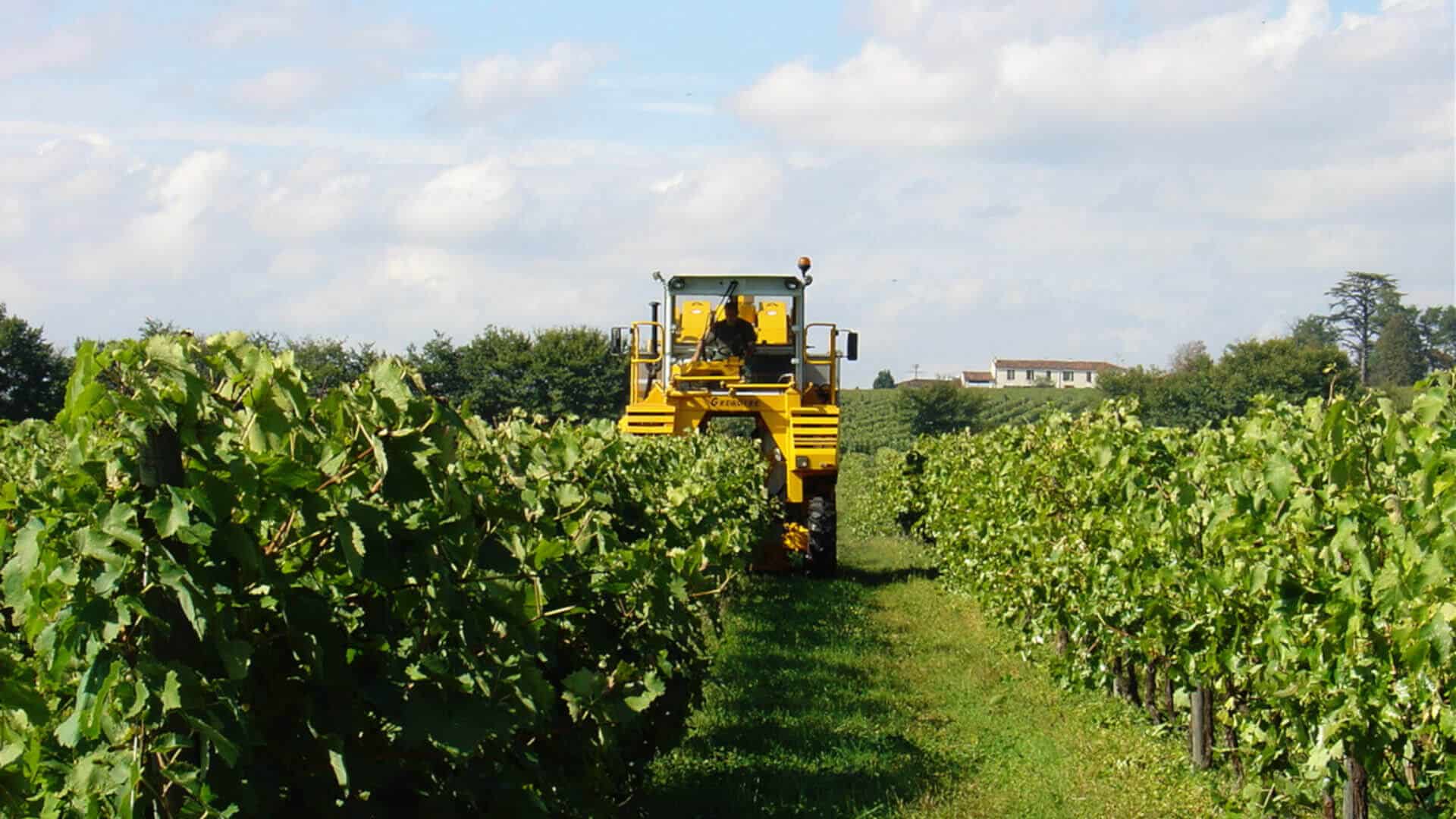
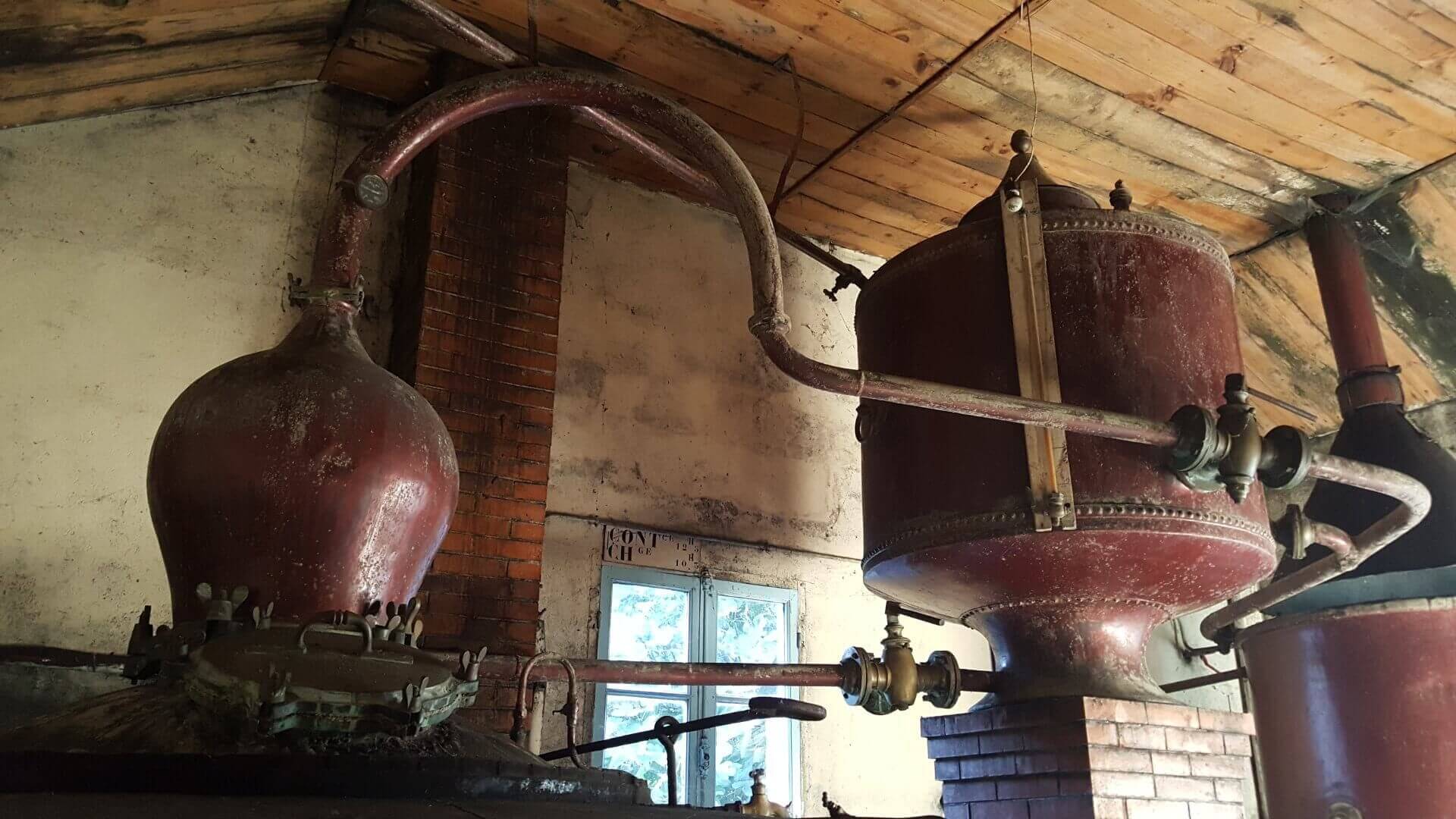
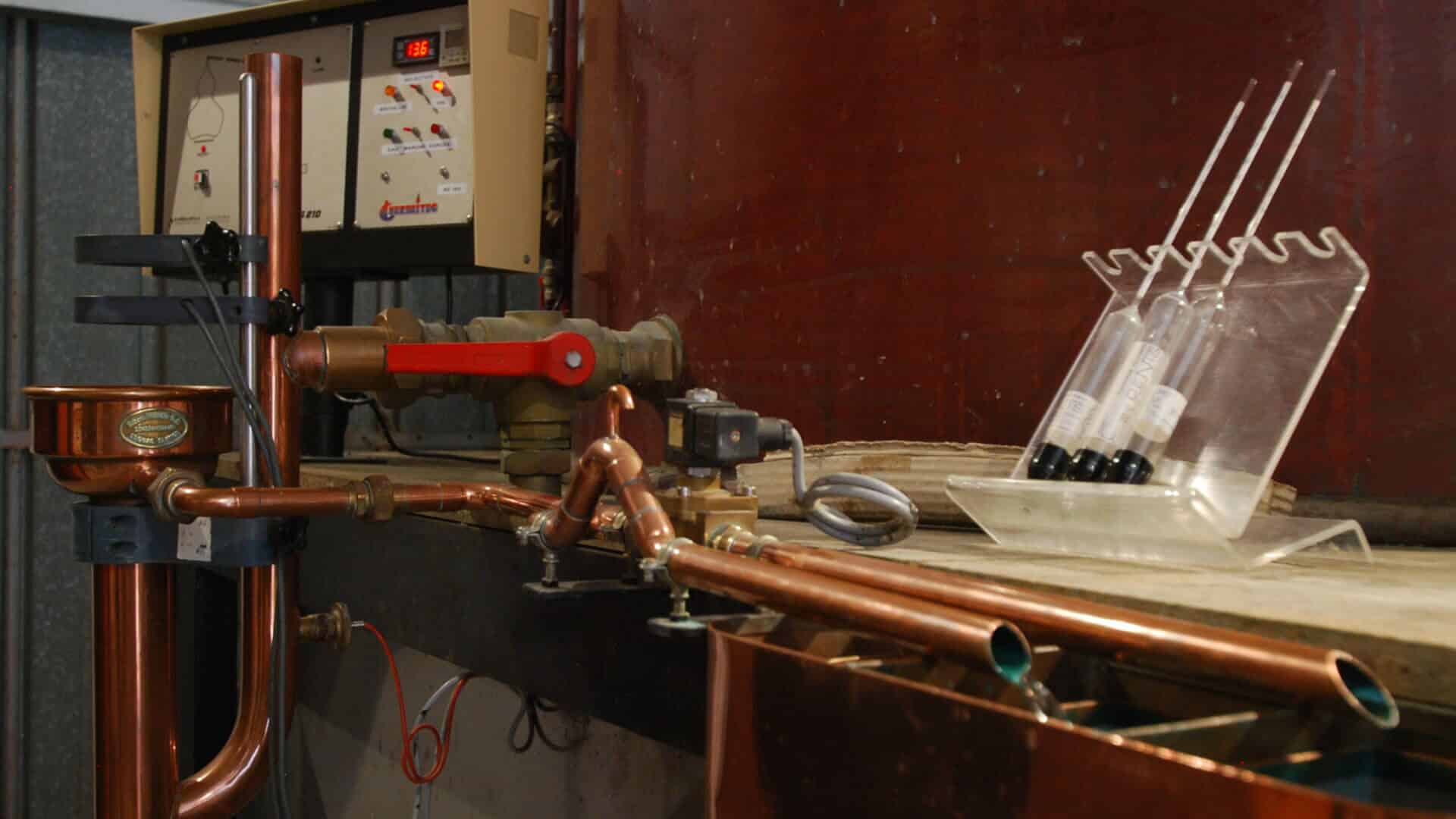
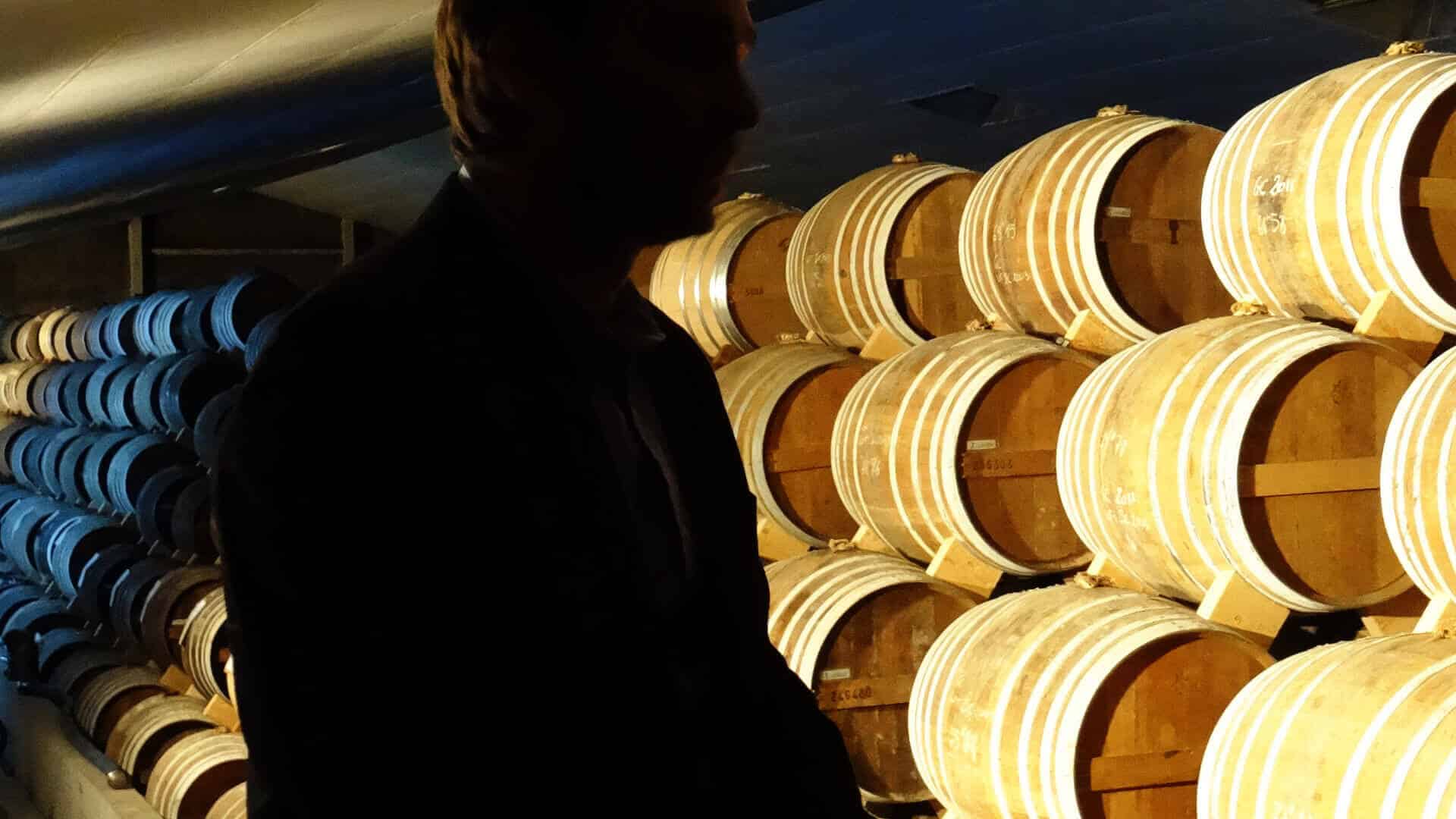
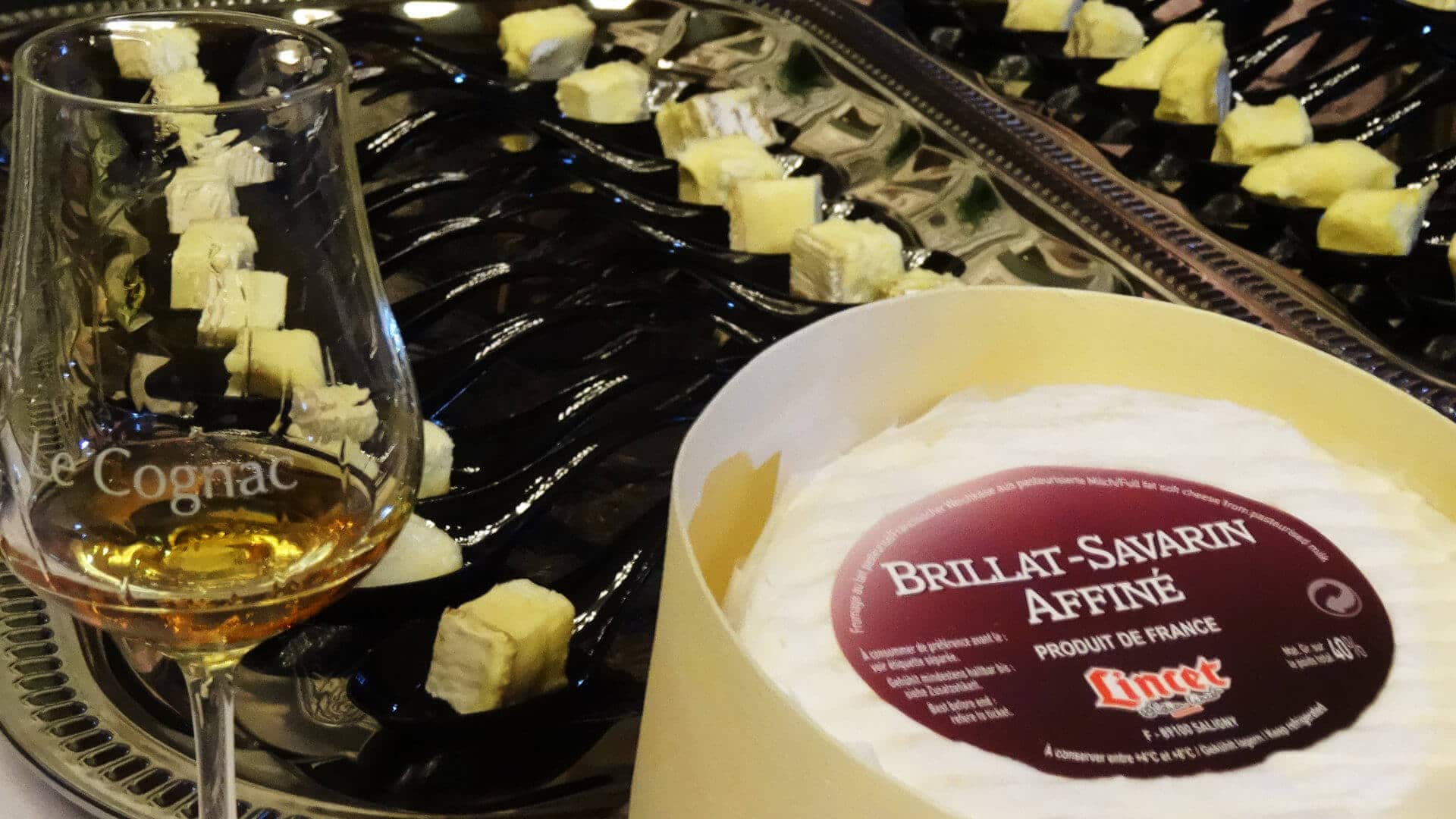
Text : Copyright © BNIC (Bureau National Interprofessionnel du Cognac) : www.cognac.fr

Spend your next getaway or vacation in the Cognac vineyard, away from the frenzy of cities and crowded beaches
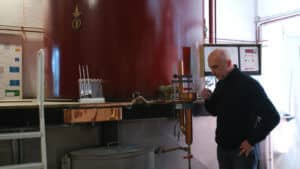
Let’s push open the doors of a Grande Champagne estate to visit the distillery and meet its master distiller
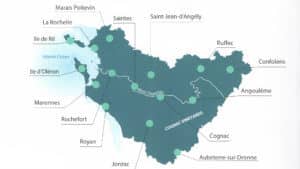
With our DMC, travel through exceptional terroirs in the Center of France where hidden treasures will be revealed to you in Slow Travel mode
By subscribing to our newsletter you will receive our news from the Cognac and Charentes vineyards a few times a year.
In accordance with GDPR rules, you can cancel your registration at any time.
| Cookie | Duration | Description |
|---|---|---|
| pll_language | 1 year | The pll _language cookie is used by Polylang to remember the language selected by the user when returning to the website, and also to get the language information when not available in another way. |
| Cookie | Duration | Description |
|---|---|---|
| _gat | 1 minute | This cookie is installed by Google Universal Analytics to restrain request rate and thus limit the collection of data on high traffic sites. |
| Cookie | Duration | Description |
|---|---|---|
| CONSENT | 16 years 3 months 24 days 7 hours | These cookies are set via embedded youtube-videos. They register anonymous statistical data on for example how many times the video is displayed and what settings are used for playback.No sensitive data is collected unless you log in to your google account, in that case your choices are linked with your account, for example if you click “like” on a video. |
| _ga | 2 years | The _ga cookie, installed by Google Analytics, calculates visitor, session and campaign data and also keeps track of site usage for the site's analytics report. The cookie stores information anonymously and assigns a randomly generated number to recognize unique visitors. |
| _gid | 1 day | Installed by Google Analytics, _gid cookie stores information on how visitors use a website, while also creating an analytics report of the website's performance. Some of the data that are collected include the number of visitors, their source, and the pages they visit anonymously. |
| Cookie | Duration | Description |
|---|---|---|
| fr | 3 months | Facebook sets this cookie to show relevant advertisements to users by tracking user behaviour across the web, on sites that have Facebook pixel or Facebook social plugin. |
| IDE | 1 year 24 days | Google DoubleClick IDE cookies are used to store information about how the user uses the website to present them with relevant ads and according to the user profile. |
| test_cookie | 15 minutes | The test_cookie is set by doubleclick.net and is used to determine if the user's browser supports cookies. |
| VISITOR_INFO1_LIVE | 5 months 27 days | A cookie set by YouTube to measure bandwidth that determines whether the user gets the new or old player interface. |
| YSC | session | YSC cookie is set by Youtube and is used to track the views of embedded videos on Youtube pages. |
| yt-remote-connected-devices | never | These cookies are set via embedded youtube-videos. |
| yt-remote-device-id | never | These cookies are set via embedded youtube-videos. |
| yt.innertube::nextId | never | These cookies are set via embedded youtube-videos. |
| yt.innertube::requests | never | These cookies are set via embedded youtube-videos. |
| _fbp | 3 months | This cookie is set by Facebook to display advertisements when either on Facebook or on a digital platform powered by Facebook advertising, after visiting the website. |
| Cookie | Duration | Description |
|---|---|---|
| BkCheckoutSession | session | This cookie is set by the Booking kit. This cookie is used for operation of the shop. |
| BkOpSession | 1 day | No description available. |
| cookielawinfo-checkbox-functional | 1 year | The cookie is set by GDPR cookie consent to record the user consent for the cookies in the category "Functional". |
| slimstat_tracking_code | 30 minutes | No description available. |
| _gat_bkTracker | 1 minute | No description available. |